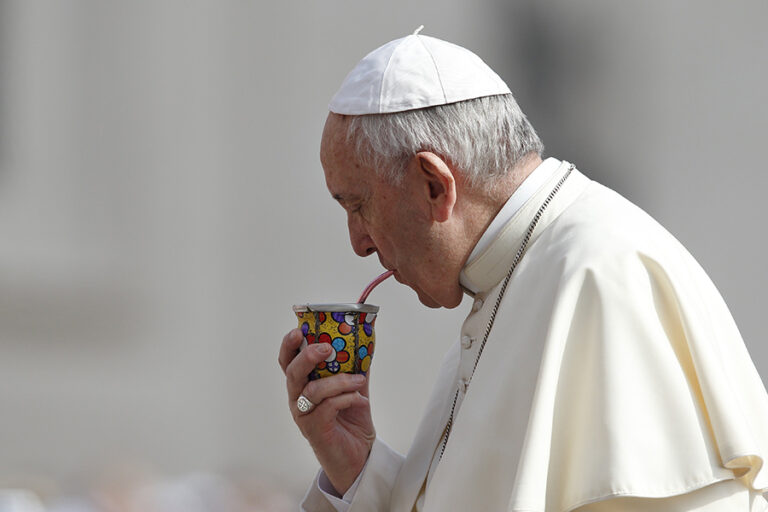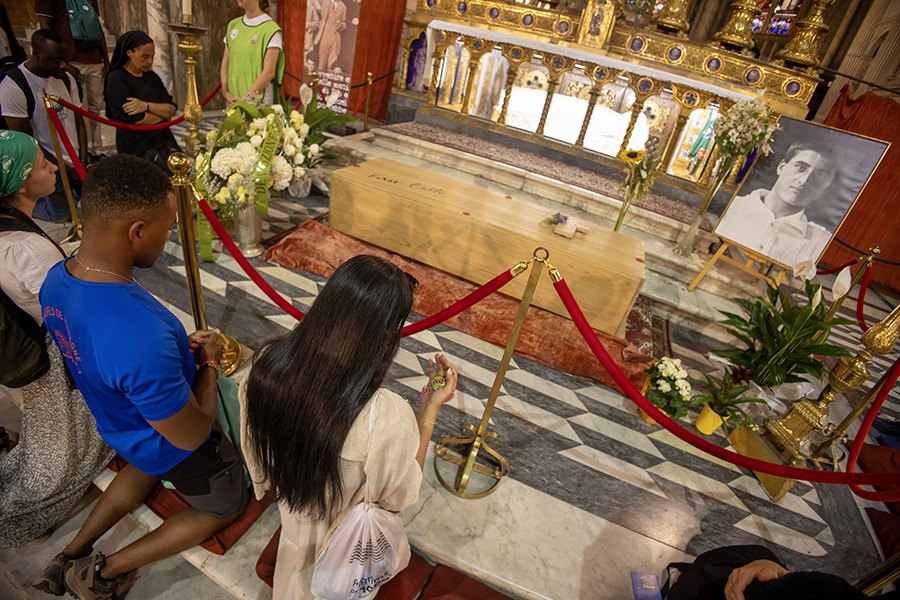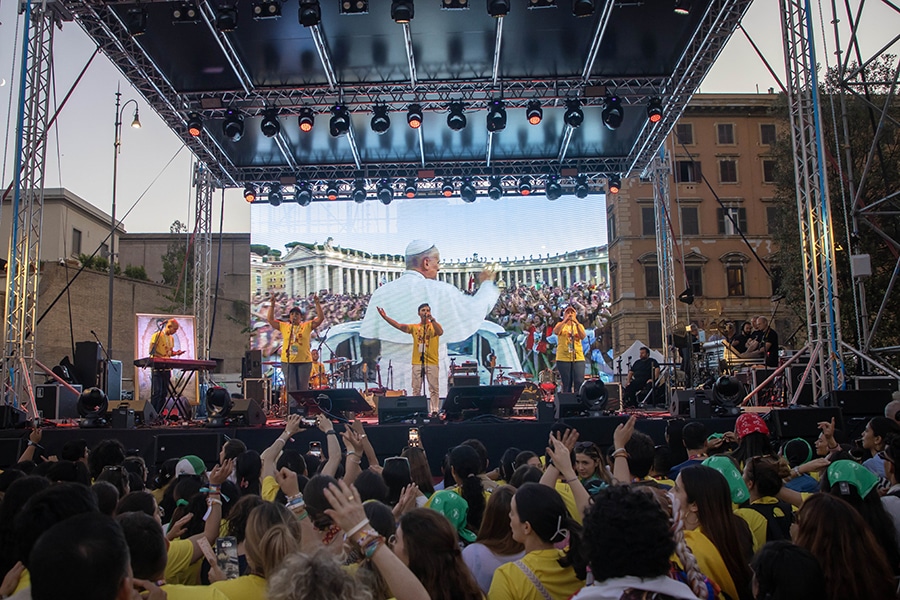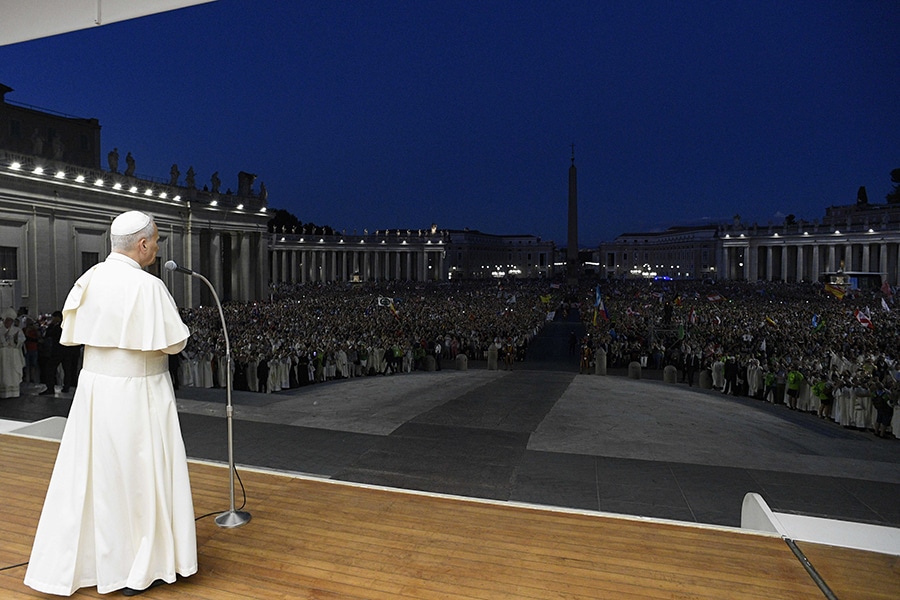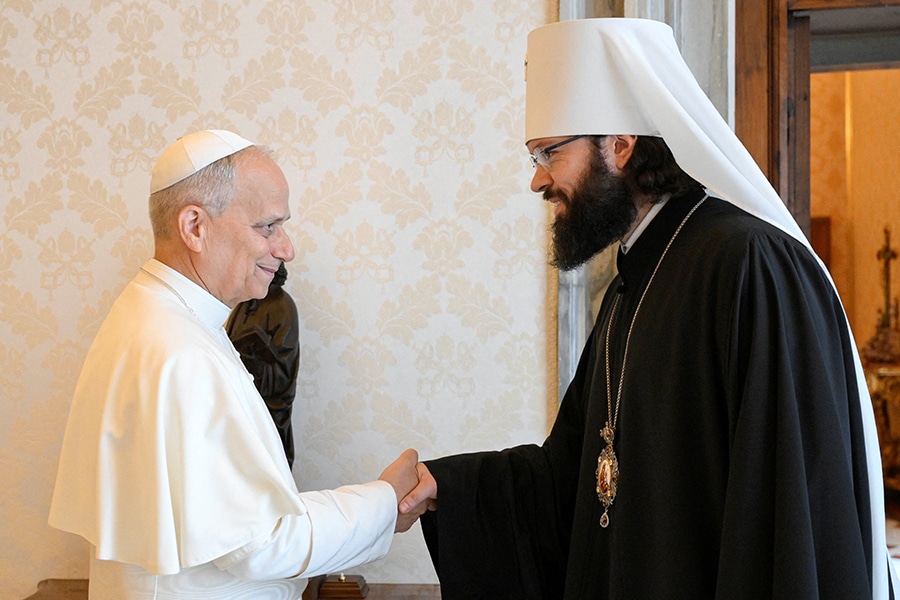Pope Francis is celebrating the 10th year of his papacy March 13. This is one in a series of stories on his decade as Pope.
VATICAN CITY (CNS) — Right from the start, upon his election, Pope Francis presented a whole new style of being pontiff.
The way he spoke to the vast crowd after his election March 13, 2013, was familial and down-to-earth, beginning with, “Brothers and sisters, good evening,” and ending with “We’ll see each other soon!” and “Have a good night and sleep well!”
He repeatedly referred to himself as “bishop of Rome,” which eventually ended up being his sole title in the “Annuario Pontificio,” the Vatican yearbook, and would be another sign of his vision for renewal by promoting a more collegial and decentralized church.

And his invitation to the crowd on the day he was elected — “Let’s begin this journey” with “fraternity, love, trust” and prayer, and “may it be fruitful for evangelization” — was a clear sign of a new style he saw for the entire church, that of synodality, with all brothers and sisters in the faith walking, praying and evangelizing together.
That first night also gave a glimpse into how Pope Francis would lead the universal church in the uncharted situation of having a retired pope in the wings. He led everyone in prayer “for our Bishop Emeritus Benedict XVI.”
Many of his most unexpected choices on how he would live as pope were offered as a kind of, “Do as I do, not just as I say,” especially to his brother bishops around the world. He chose to live in a Vatican guesthouse instead of the Apostolic Palace, he has used an annual penance celebration at the Vatican to publicly go to confession, he responds to many people who write to him with a letter, note or phone call, he meets regularly with victims of abuse, and he has gone in person to pay a bill, to pick up a new pair of glasses and to visit the elderly and the sick.
The election of Cardinal Jorge Mario Bergoglio of Buenos Aires, Argentina, marked the first time a Jesuit was made pope. He ushered in a number of styles characteristic of his order: the Ignatian practice of discernment for making decisions in the presence of God; seeking God’s presence in all things; and a penchant for boiling his talks down to three bullet points.
He was the first pope to come from the Americas, born of immigrant Italian parents; this second-generation experience lent lived authenticity to his insistence migrants be respected, integrated and appreciated for their hard work and the rich diversity they bring to a host nation.
Most indicative of his unique style was choosing the name “Francis” to honor St. Francis of Assisi, known for his poverty, commitment to peace and love of creation. It was a signal of the style to come: simplicity, humility, working with the poor, desiring a church that is poor and for the poor, and further deepening his predecessor’s love of creation integrated with a respect for all life.
Under his watch, the papal charities office has increased its outreach, particularly to the homeless who live near the Vatican and in other parts of the world, such as Ukraine, where he has sent his papal almoner to deliver aid directly and convey his prayers.
He also set aside the usual practice of washing the feet of 12 priests during a public celebration of the Holy Thursday Mass of the Lord’s Supper. Instead, he has celebrated smaller Masses — closed to the public — in prisons, refugee centers and rehabilitation centers, washing the feet of Catholics and non-Catholics, men and women, in order to show Christ’s love for everyone, especially the most marginalized.
His idea of “outreach” has included reaching outside the Vatican bubble. He called in “outsiders” as the majority of the members of his International Council of Cardinals and of the Vatican safeguarding commission. He gets a new personal secretary every few years and gives dozens of interviews to big and small media outlets.
His desire to “speak from the heart” means many off-the-cuff comments, homespun anecdotes, sharp rebukes or critiques and an occasional statement that requires clarification or an apology.
A native-Spanish speaker who grew up with Italian-speaking relatives in Argentina, the pope merges a number of styles and, as a former high school teacher, often draws on literary themes and rhetorical devices.
His memorable metaphors and allegories have a religious message: priests need to be “shepherds living with the ‘smell of sheep'”; confession is not “sitting down in a torture chamber”; and Catholics must resist “a throwaway culture” that readily disposes of people’s lives and dignity.
Pope Francis also has offered a new approach to evangelization that he had mapped out in his brief address during the pre-conclave meetings of the cardinals. Cardinal Bergoglio’s words struck a chord with his listeners and formed the basis of his blueprint as pope.
The outline of his talk said that when the church is self-referential with a kind of theological narcissism, it gets sick and is unable to carry out its mission to go out and evangelize; in effect, such a church keeps Jesus within and does not let him out.
Jesus is knocking so that “we will let him come out,” the then-Cardinal Bergoglio had said, and the next pope needs to help the church go out to the “peripheries” and become “the fruitful mother who gains life from the sweet and comforting joy of evangelizing.”
Read More Vatican News
Copyright © 2023 Catholic News Service/U.S. Conference of Catholic Bishops

